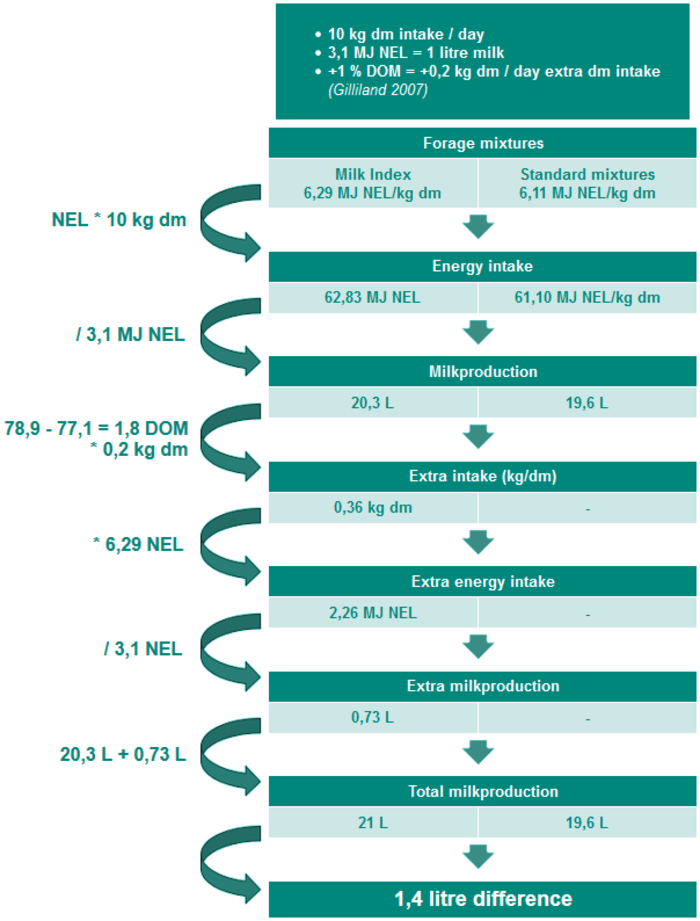Milk Index
More milk and more milk protein

More milk and more milk protein

The ratio of protein and energy in terms of amount and synchrony in time of availability in the rumen strongly influences the milk (protein) yield. Rumen microbes can rapidly degrade herbage protein. This can be efficiently utilised to build up milk protein, depending on the available energy. To optimise the potential microbial protein synthesis, rapidly available energy in form of sugar is necessary. When this energy is missing, the rumen-degradable protein is not fully utilised in milk protein production. The rate of forage degradation i.e. cell wall digestibility is very important for the synchrony of protein and energy in the rumen. Once the cell wall is degraded, sugar is easily available as a rapidly degradable source of energy.
In 2015 and 2016 a trial was performed on the DSV breeding station in Ven Zelderheide in The Netherlands.
Several Milk Index mixtures were compared to common standard mixtures. For both, the Milk Index and the standard mixtures, all used varieties were on the recommended list in the Netherlands. The only difference is that the Milk Index mixtures consist of a high percentage of Milk Index varieties compared to standard mixtures.
The trial showed the following results:

The yield for both types of mixtures do not differ neither does the protein content. But the sugar and energy content differ, the feeding value in NEL differs almost 0.2 NEL. The higher cell wall digestibility of 1.8% is influenced by the different structure of the cell wall as one can see on the NDF, ADF and ADL parameters.
Based on these feeding values a cow can have a higher milk production of 1.4 litre milk more per day as shown in the following figure.

A part of this milk production is based on the higher energy content of the Milk Index mixtures. This results in a difference of 20.3-19.6 = 0.7 litre milk per day. Due to the higher feed intake because of the higher DOM the cow takes up 0.36 kg dm extra per day, resulting in an extra 0.73 litre more milk.
Thus a dairy cow, fed with Milk Index forage mixtures, can produce additional 1.4 litre milk per day. Calculated for a 305-days-lactation of a dairy cow (milk giving period): 1.4 l x 305 = 427 l.
That means for 100 dairy cows: 42.700 l more milk are possible!